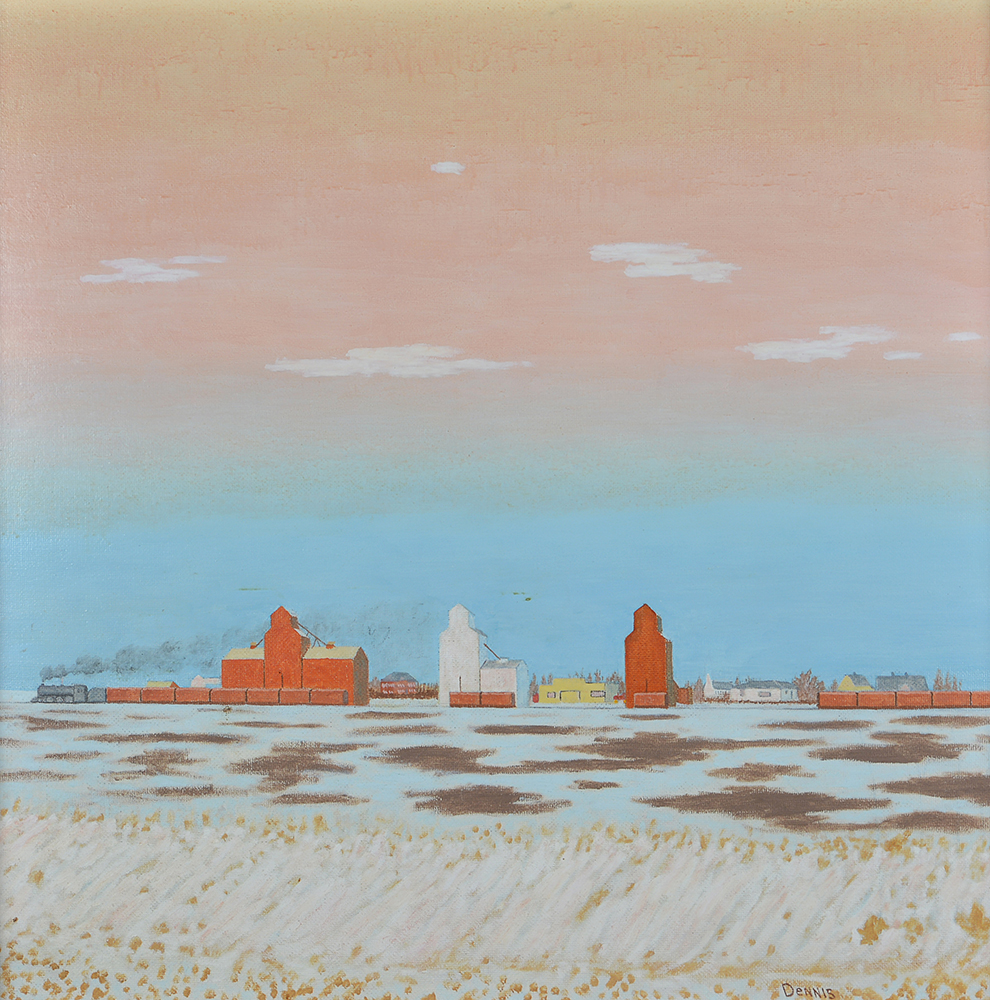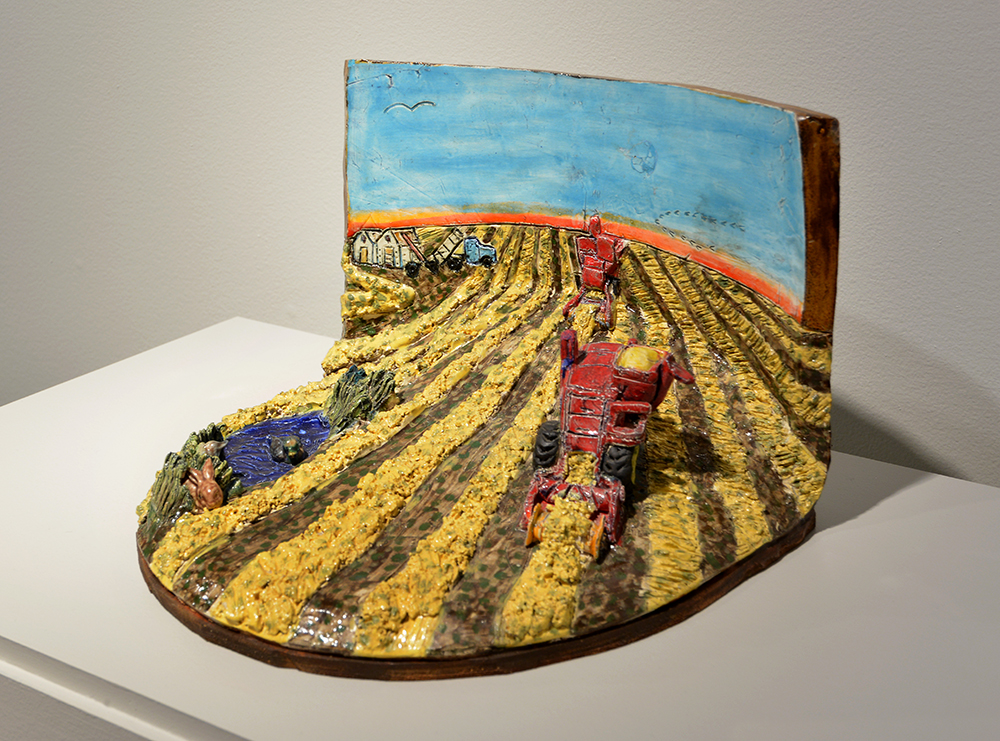Wesley Dennis
Wesley Dennis was a self-taught artist who grew up in Moose Jaw, Saskatchewan. From a young age, he was drawn to art. He started by copying Group of Seven paintings. Then, he developed his own style in drawing, watercolors, and oils. Dennis’ art is informed by his personal experiences and memories. His paintings reflect the prairie landscape and light. They often depict scenes from pioneer days to modern times.
Dennis’s work is characterized by a sense of nostalgia and a deep connection to the land he knew so well. In his own words Wesley Dennis described his reasons for painting,
I seem to have been born that way. Philosophy – mostly nostalgia, coupled with the realization there are very few artists left who can remember the pioneer days on the prairies. Having lived in and around the city of Moose Jaw since 1900, I can distinctly remember much that has become almost legendary about the area.1
Dennis seeks to mythologize a particular landscape in his work by revealing its unique beauty and preserving its history. For Dennis, this included natural phenomena and changes in the topography. It also included the history of settlement and the development of agriculture.
David Thauberger first encountered vernacular or folk art when he began working at the Saskatchewan Arts Board. Thauberger was a young artist who had recently completed his master’s degree. He was soon to develop his iconic style, painting the architectural facades of buildings. He served as a juror for art adjudications across the province, where he encountered and gave advice and support to the artists he met. He was likewise inspired by the artists he met.
The untutored artist is a thing of the past. My initial delight was that these people (folk artists) were the first artists when I returned from my studies in the States whose work had the ring of authenticity.2
The connection between Thauberger and Dennis can be seen to have gone both ways. Thauberger paid direct homage to Wesley Dennis in recreating his small painting of two red combines in a field. The ceramic artwork, A Prairie Piece, brought the painting to life in three dimensions. Dennis’ work mythologizes and gives iconic representation to the past. Thauberger similarly documented and painted the facades of houses and buildings giving them the veneer of the monumental.
David Thauberger and Wesley Dennis are two artists that significantly contributed to the cultural fabric of Saskatchewan. Through their distinct styles and perspectives, they have created a lasting legacy. It continues to inspire and resonate with audiences within and outside Saskatchewan. Their connection is a testament to the power of art to convey the essence of a place and its people. Their works stand as enduring symbols of Saskatchewan’s rich artistic heritage.
See Bibliography for sources.




